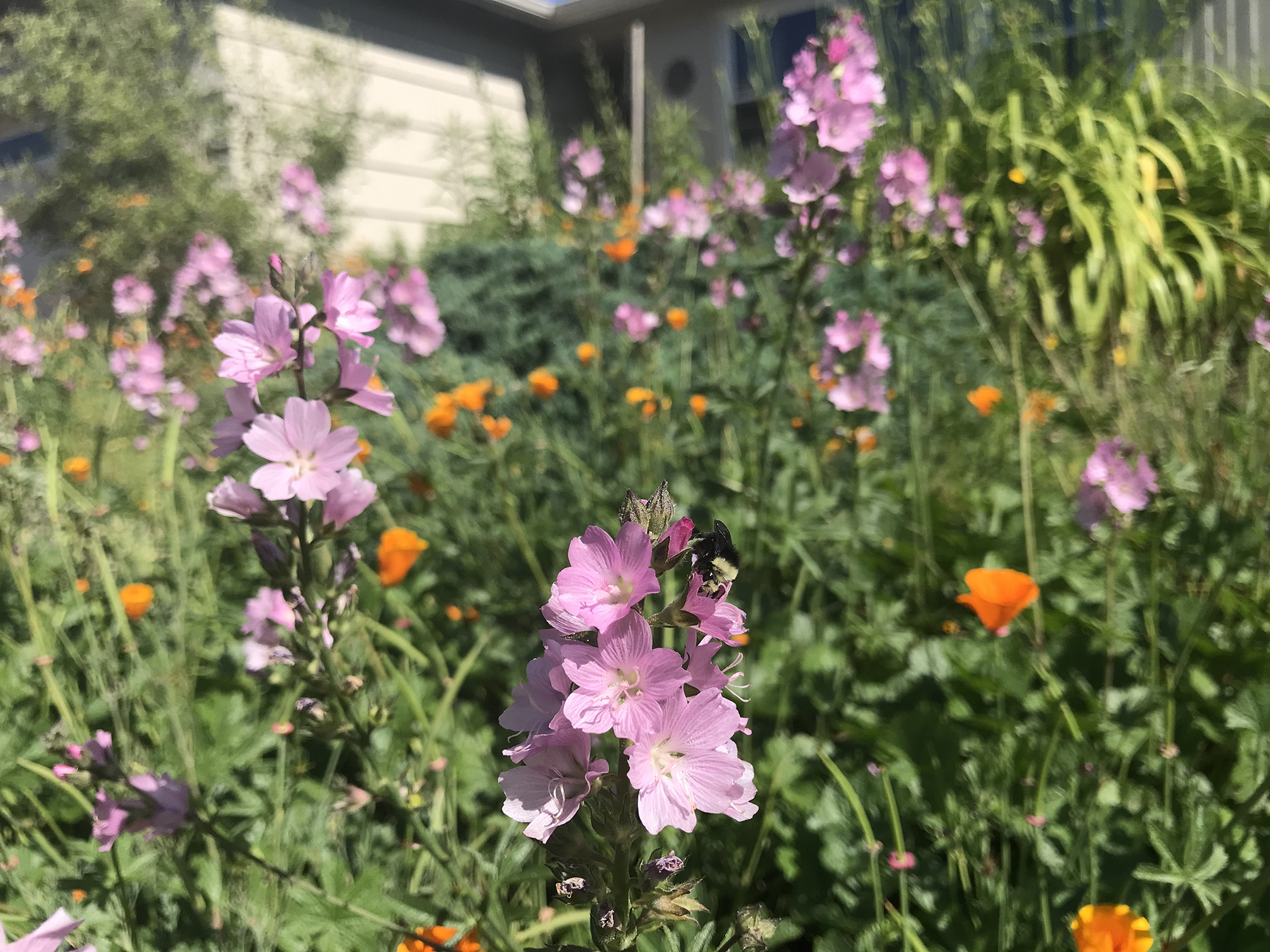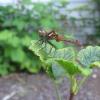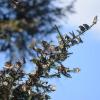Most spring and summer mornings you’ll find me in my postage stamp-sized garden. My coffee gets cold as I water, weed, and check in on how plants are developing. As I write this, the ninebark and checkermallow blooms are winding down, while the blossoms on my goldenrod and mock orange are about to burst open. Even in the chill of the early morning, bees are out foraging. A few days ago, I sat and watched a small orange-rumped bumble bee (officially called the black-tailed bumble bee, but where I live the orange bands are most obvious) worker collecting pollen from the buckbrush (a native shrub in the genus Ceanothus) that I planted last fall.
Something as simple as observing the bees and other pollinators in your garden is a wonderful way to celebrate Pollinator Week. Late June is a time when, across the county, bees and butterflies are emerging and making themselves known.

A pollinator garden doesn’t only create space for bees, but also a relaxing space for people. Even a small garden allows for intimate interactions and observations of pollinators, such as this yellow-faced bumble bee foraging on checkermallow. (Photo: Aimee Code.)
Pollinator Week is also a great time to pledge to do more for all these amazing creatures. Unlike New Year’s resolutions, which usually include giving up something you like, resolving to support bees is often easy and fun. One of my favorite pollinator week resolutions happened years ago when my six-year-old neighbor decided to ensure our neighborhood was pollinator friendly. I remember the hot sunny June day that he donned a suit and tie then proceeded to knock on doors up and down the block asking everyone to stop using pesticides. Almost everyone agreed to avoid chemical pest management. To this day, when new neighbors move in someone always asks them to take the pledge. That neighborhood pledge to protect pollinators also prompted us to start sharing seeds and plants. My 8-foot-tall ninebark came from a neighbors bush and a number of neighbors have goldenrod, asters, and mallow from my garden.

A front yard can become a resource and inspiration for neighbors. Gardeners can share plants, advice, and pollinator stories, as well as connections and friendship. (Photo: Aimee Code.)
My neighborhood is far from unique. Over the years, I have drawn inspiration from many individuals who are supporting pollinator conservation at home. Karen Stanovich from Fairfield, California, has been gardening for monarchs and other pollinators for years. Her garden is pesticide-free and contains dozens of different plant species to feed the bees and butterflies. A few years ago, when her own stand of milkweed wasn't enough to feed monarch caterpillars (milkweed is the only plant monarch caterpillars will eat) she bought milkweed from a nursery, only to have her caterpillars die. She found out later that those plants had been treated with a number of pesticides. Since then she has been growing her own native milkweed plants and sharing them with others. She estimates that she’s given away scores of narrowleaf and showy milkweed plants.
The actions of people like Karen give me hope. She is joining many other Xerces staff and supporters in doing their part to recover the western monarch population following its precipitous drop in recent years. Elsewhere, people are devoting time to surveying for rare bumble bees, rallying their communities to become a bee City USA affiliate, speaking out about pesticide use, choosing to purchase products carrying the Bee Better Certified seal, letting their lawn grow, or simply talking to their neighbors about why they care about pollinators. individual steps that effectively create change. Thank you.

Gardener and monarch enthusiast, Karen Stanovich, started growing her own native milkweed plants so that they would be free from pesticides and safe for monarch caterpillars. She now grows far more than she needs for her own garden and gives them away to other gardeners. (Photo: Karen Stanovich.)
Do you have a story to share about how you’re protecting pollinators from pesticides? We’d love to hear it. You can post it on social media using the hashtag #MyPollinatorStory, and tag us @xercessociety. Or if you prefer email, send us a note at [email protected]. If you don’t have a story yet, take the Pollinator Protection Pledge and I bet you’ll soon have a story to share. We’ve got lots or resources to help guide you. You can learn which climate-resilient, pollinator-attracting plants are best for your area from our regional plant lists. Our fact sheet: Smarter Pest Management: Protecting Pollinators at Home and our video Managing Pests in Your Garden offer ideas to make your garden more resilient and avoid pesticides. And when you go to purchase pollinator-friendly plants consider taking the time to talk to nursery staff about Buying Bee-Safe Plants—plants that are free from harmful pesticide residues.
Further Reading
Learn what you can do to Bring Back the Pollinators and take the Pollinator Protection Pledge.
Find information about Rethinking Pesticide Use in Yards & Gardens
The Pollinator Conservation Resource Center contains a wealth of information about how to help.
For farmers and food companies: Bee Better Certified.
For towns, cities, and colleges: Bee City USA & Bee Campus USA.
Participate in community science with Bumble Bee Watch.



